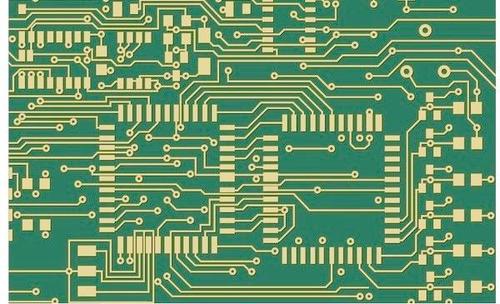 +86 755 2794 4155
+86 755 2794 4155  sales@knownpcb.com
sales@knownpcb.com
-
Shenzhen KNOWNPCB Technology Co., Ltd.
 +86 755 2794 4155
+86 755 2794 4155  sales@knownpcb.com
sales@knownpcb.com
 2024-11-06
2024-11-06
 110
110

PCB board materials are classified based on several factors, including their performance characteristics, intended applications, and manufacturing requirements.
1. Based on Substrate Materials
One of the main ways to classify PCB materials is by the type of substrate used. The most common substrate material is fiberglass reinforced epoxy resin, known as FR 4. FR 4 boards have good mechanical strength, electrical insulation properties, and are suitable for a wide range of applications. They can withstand relatively high temperatures during the soldering process and have stable dielectric properties. Another type of substrate is polyimide, which is used in high temperature and high frequency applications. Polyimide based PCBs can operate at much higher temperatures than FR 4 boards and have excellent dielectric properties at high frequencies. They are often used in aerospace, military, and some high end electronics applications where temperature and frequency stability are crucial. There are also ceramic based substrates that offer even better thermal conductivity and electrical performance. Ceramic PCBs are used in power electronics and some high power RF (Radio Frequency) applications.
2. Classification by Electrical Properties
The electrical properties of PCB materials play a vital role in their classification. Dielectric constant (Dk) and dissipation factor (Df) are two important parameters. The dielectric constant determines the capacitance between the conductive layers of the PCB. A lower dielectric constant is preferred for high speed digital and high frequency RF applications as it reduces signal propagation delay and crosstalk. The dissipation factor measures the loss of electrical energy in the form of heat within the dielectric material. Materials with a low dissipation factor are more suitable for applications where signal integrity and power efficiency are critical. Based on these electrical properties, PCB materials can be classified as low loss materials for high frequency applications and standard loss materials for general purpose applications.
3. Classification by Flame Resistance
Flame resistance is an important consideration for PCB materials, especially in applications where safety is a concern. PCBs are classified according to their ability to resist ignition and limit the spread of fire. The most common flame resistance classification is the UL (Underwriters Laboratories) 94 standard. PCBs can be rated as UL 94 V 0, UL 94 V 1, or UL 94 V 2, among others. A UL 94 V 0 rated PCB has the highest level of flame resistance and is self extinguishing within a very short time after the ignition source is removed. This rating is often required for electronics used in environments such as buildings, automobiles, and consumer electronics where fire safety is a top priority.
4. Classification by Manufacturing Grade
PCB materials can also be classified based on manufacturing grade. Standard grade materials are used for general purpose PCBs with relatively simple designs and less demanding performance requirements. They are cost effective and suitable for mass production of consumer electronics and some industrial control boards. High grade materials are used for more complex and high performance PCBs. These materials may have better dimensional stability, tighter tolerances, and higher quality surface finishes. They are often used in applications such as high speed computing, telecommunications, and precision electronics where the quality and reliability of the PCB are critical to the overall performance of the system.

Or call +86 755 2794 4155
Inquiry Now

